February Newletter
Welcome to our monthly Newsletter:
February is here and we are ready to GO!
School Assessments and Vpk assessments have been done. Please make time to review this information with your lead teacher. It is a great way to see the growth of your student.
We have many new students joining us this month as well as students returning from foreign lands. It is so exciting for our American students to share languages and customs with students and families throughout the world.
Chesterbrook Academy families do a great job of spreading the news to friends about our school. Referrals make a great difference in enrollment and we also have incentives for parents that have families who enroll in our program.
This month there is a savings on tuition for new parents who enroll their children in Chesterbrook. Look at the web page or call the school for further information.
In addition, President’s Day is on February 15. We will be closed that day to students but the staff will be participating in Professional Development Day.
Please view our calendar of events for further school events.
Happy Valentine’s Day to all our students, families and friends.
Thank you for your support!
Let’s take a look at our monthly Educational Newsletter:
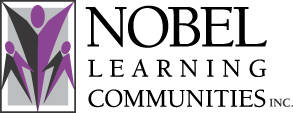
Helping Your Preschooler Develop
Positive Friendship Skills
Are you puzzled by some of your child’s social behaviors? Have you noticed that your toddler doesn’t interact with other children very often? Does your three-year-old get frustrated when a classmate won’t play with him? Will your four-year-old only play with her best friend?
These are all normal social behaviors for preschoolers. Learning how to develop friendships is a lifelong process. Children’s social behaviors evolve from smiling and cooing at others, to engaging in parallel play, to eventually forming friendships and playing together.
Below are ways we help develop friendships in the classroom, as well as ideas for you and your child to do at home.
INFANTS:
In the classroom: Before they can communicate verbally, infants build connections by smiling, cooing and crying. By two months old, they might turn toward other infants, and by twelve months, they begin to imitate their peers. Teachers help facilitate this relationship by sitting infants near each other during activities such as story time and tummy time.
At home: Even though infants don’t really play with one another, they still benefit from “play dates” with other infants. Sit your infant face-to-face with another infant or in close proximity to an older sibling, and provide each child separate toys. Note when your infant watches the other child and what captures his attention.
Recommended reading: Friends by Helen Oxenbury and Let’s Play by Leo Lionni
TODDLERS (ages 1-2):
In the classroom: Many young children tend to engage in “parallel play.” They play near other children, but each child is doing something different. This is a natural phase of development. As children get older, they begin to enjoy more shared activities with their peers. For example, they might enjoy splashing their hands at the water table with others, looking at books while sitting close to a friend, and dancing to music with their classmates.
At home: Invite another parent and child to your home for a play date. Blocks, balls, dress up clothes and toy kitchen sets are great toys for children at this age. Don’t force them to play with each other. Instead, let the children decide on the level of interaction.
Recommended reading: Do You Want to be My Friend? by Eric Carle and I Can Share by Karen Katz
BEGINNERS (ages 2-3):
In the classroom: In the Beginner classroom, teachers refer to classmates as “friends.” Students learn about personal space and begin to practice good manners by saying please and thank you.
At home: Model positive behaviors while playing with your child. Say “I’m going to roll the ball to you. Can you please roll the ball back to me?” Afterward, say “Thank you. You are being a good friend.”
Recommended reading: How Do Dinosaurs Play with Their Friends? by Jane Yolen and Let’s be Friends by P. K. Hallinan
INTERMEDIATES (ages 3-4):
In the classroom: Between ages three and four, children attempt to understand social situations, but often do so from an egocentric point of view. They need adult guidance to help them navigate peer conflict and model appropriate friendship-making behaviors. Small group activities help children learn how to follow directions, take turns and develop friendships.
At home: Ask your child about their friends and what games they played together. If he says, “Andrew didn’t play with me today. He’s mean,” you could say, “Andrew may have wanted to play a different game today. Maybe you can play together tomorrow. What does Andrew like to play?”
Recommended reading: Just My Friend and Me by Mercer Mayer and Llama Llama Time to Share by Anna Dewdney
PRE-K/PRE-K2 (ages 4-5)
In the classroom: Friendship in Pre-K and Pre-K2 is usually reciprocal and deliberate as children become more skilled in social interactions and look for peers with shared interests. Our character education program reinforces friendship making skills using songs, games, books and brain-builder activities to nurture skills such as collaboration, understanding feelings and resolving conflicts.
At home: Bring your child to events that include multiple children, such as birthday parties, or encourage your child to play a board game that requires multiple players. Ask him to introduce himself to the other children, or encourage him to play the game taking turns. If you notice frustration from your child, say, “In order to play the game, we all have to play together.”
Recommended reading: Frog and Toad are Friends by Arnold Lobel and A Splendid Friend, Indeed by Suzanne Bloom
Don’t be concerned about the number of friends your child has, as it is more about quality than quantity. Each child will develop friendships at his own pace. What matters most is the development of social skills such as collaboration and problem-solving, which will help him transition into elementary school and beyond.
– Lauren Starnes, PhD – Director of Early Childhood Education
This month:
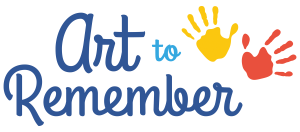
Art to Remember Fundraiser is a great way to capture and share the artwork of our children. Our students will be creating colorful, fun artwork. Look for personalized order form showing your children’s works.
These artistic creation make great gifts for Moms, Dads, Family and Friends.
Personalized order forms will be sent home early March.
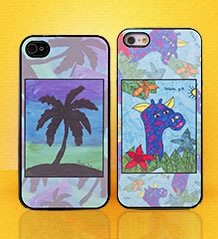
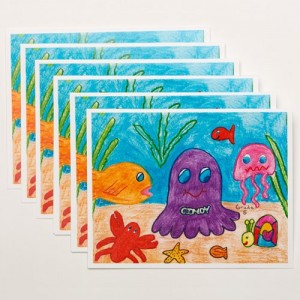
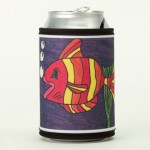
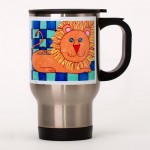
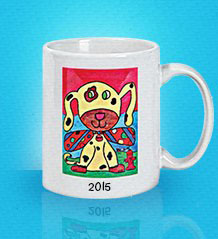
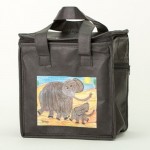
This entry was posted in Palm Beach Gardens. Bookmark the
permalink. Both comments and trackbacks are currently closed.

February Newsletter
February Newletter
Welcome to our monthly Newsletter:
February is here and we are ready to GO!
School Assessments and Vpk assessments have been done. Please make time to review this information with your lead teacher. It is a great way to see the growth of your student.
We have many new students joining us this month as well as students returning from foreign lands. It is so exciting for our American students to share languages and customs with students and families throughout the world.
Chesterbrook Academy families do a great job of spreading the news to friends about our school. Referrals make a great difference in enrollment and we also have incentives for parents that have families who enroll in our program.
This month there is a savings on tuition for new parents who enroll their children in Chesterbrook. Look at the web page or call the school for further information.
In addition, President’s Day is on February 15. We will be closed that day to students but the staff will be participating in Professional Development Day.
Please view our calendar of events for further school events.
Happy Valentine’s Day to all our students, families and friends.
Thank you for your support!
Let’s take a look at our monthly Educational Newsletter:
Helping Your Preschooler Develop
Positive Friendship Skills
Are you puzzled by some of your child’s social behaviors? Have you noticed that your toddler doesn’t interact with other children very often? Does your three-year-old get frustrated when a classmate won’t play with him? Will your four-year-old only play with her best friend?
These are all normal social behaviors for preschoolers. Learning how to develop friendships is a lifelong process. Children’s social behaviors evolve from smiling and cooing at others, to engaging in parallel play, to eventually forming friendships and playing together.
Below are ways we help develop friendships in the classroom, as well as ideas for you and your child to do at home.
INFANTS:
In the classroom: Before they can communicate verbally, infants build connections by smiling, cooing and crying. By two months old, they might turn toward other infants, and by twelve months, they begin to imitate their peers. Teachers help facilitate this relationship by sitting infants near each other during activities such as story time and tummy time.
At home: Even though infants don’t really play with one another, they still benefit from “play dates” with other infants. Sit your infant face-to-face with another infant or in close proximity to an older sibling, and provide each child separate toys. Note when your infant watches the other child and what captures his attention.
Recommended reading: Friends by Helen Oxenbury and Let’s Play by Leo Lionni
TODDLERS (ages 1-2):
In the classroom: Many young children tend to engage in “parallel play.” They play near other children, but each child is doing something different. This is a natural phase of development. As children get older, they begin to enjoy more shared activities with their peers. For example, they might enjoy splashing their hands at the water table with others, looking at books while sitting close to a friend, and dancing to music with their classmates.
At home: Invite another parent and child to your home for a play date. Blocks, balls, dress up clothes and toy kitchen sets are great toys for children at this age. Don’t force them to play with each other. Instead, let the children decide on the level of interaction.
Recommended reading: Do You Want to be My Friend? by Eric Carle and I Can Share by Karen Katz
BEGINNERS (ages 2-3):
In the classroom: In the Beginner classroom, teachers refer to classmates as “friends.” Students learn about personal space and begin to practice good manners by saying please and thank you.
At home: Model positive behaviors while playing with your child. Say “I’m going to roll the ball to you. Can you please roll the ball back to me?” Afterward, say “Thank you. You are being a good friend.”
Recommended reading: How Do Dinosaurs Play with Their Friends? by Jane Yolen and Let’s be Friends by P. K. Hallinan
INTERMEDIATES (ages 3-4):
In the classroom: Between ages three and four, children attempt to understand social situations, but often do so from an egocentric point of view. They need adult guidance to help them navigate peer conflict and model appropriate friendship-making behaviors. Small group activities help children learn how to follow directions, take turns and develop friendships.
At home: Ask your child about their friends and what games they played together. If he says, “Andrew didn’t play with me today. He’s mean,” you could say, “Andrew may have wanted to play a different game today. Maybe you can play together tomorrow. What does Andrew like to play?”
Recommended reading: Just My Friend and Me by Mercer Mayer and Llama Llama Time to Share by Anna Dewdney
PRE-K/PRE-K2 (ages 4-5)
In the classroom: Friendship in Pre-K and Pre-K2 is usually reciprocal and deliberate as children become more skilled in social interactions and look for peers with shared interests. Our character education program reinforces friendship making skills using songs, games, books and brain-builder activities to nurture skills such as collaboration, understanding feelings and resolving conflicts.
At home: Bring your child to events that include multiple children, such as birthday parties, or encourage your child to play a board game that requires multiple players. Ask him to introduce himself to the other children, or encourage him to play the game taking turns. If you notice frustration from your child, say, “In order to play the game, we all have to play together.”
Recommended reading: Frog and Toad are Friends by Arnold Lobel and A Splendid Friend, Indeed by Suzanne Bloom
Don’t be concerned about the number of friends your child has, as it is more about quality than quantity. Each child will develop friendships at his own pace. What matters most is the development of social skills such as collaboration and problem-solving, which will help him transition into elementary school and beyond.
– Lauren Starnes, PhD – Director of Early Childhood Education
This month:
Art to Remember Fundraiser is a great way to capture and share the artwork of our children. Our students will be creating colorful, fun artwork. Look for personalized order form showing your children’s works.
These artistic creation make great gifts for Moms, Dads, Family and Friends.
Personalized order forms will be sent home early March.